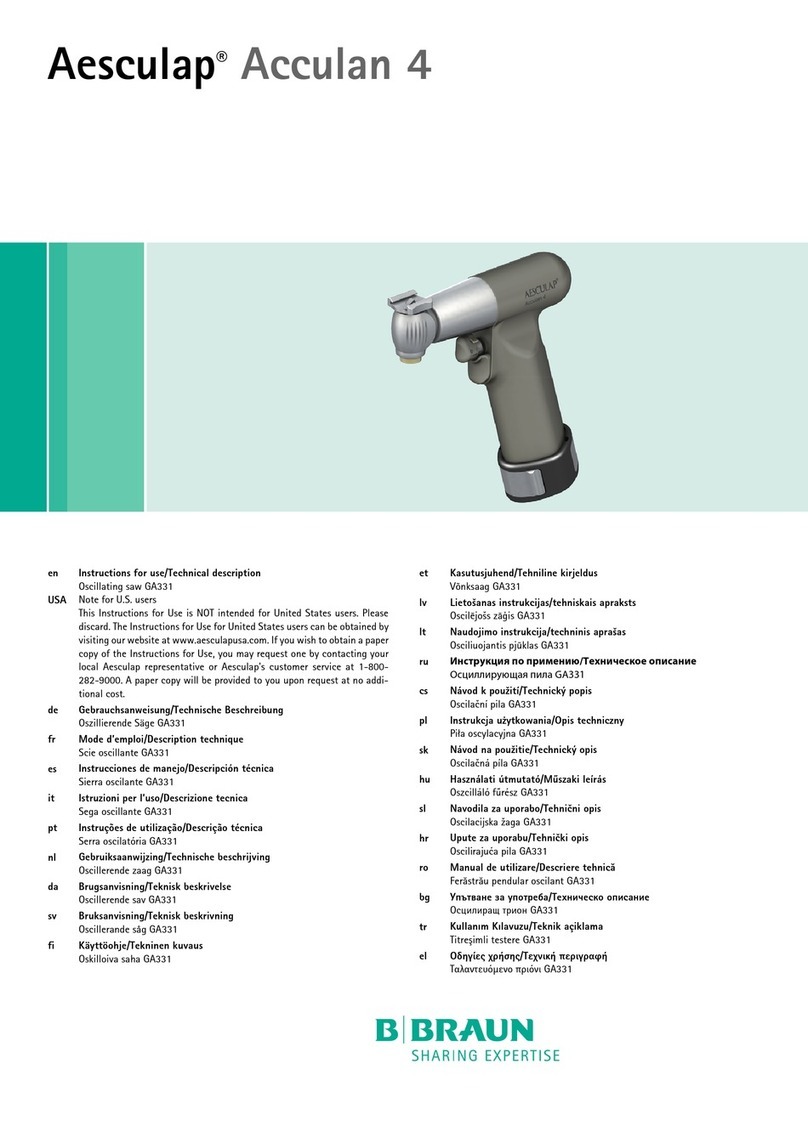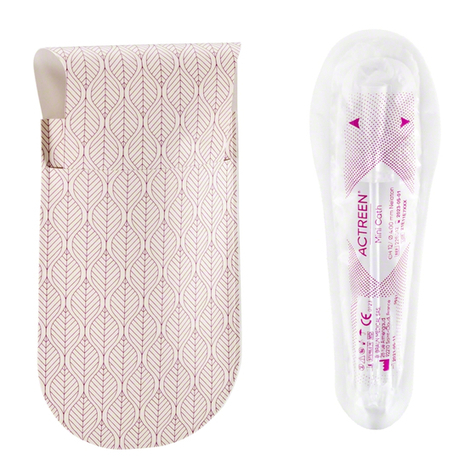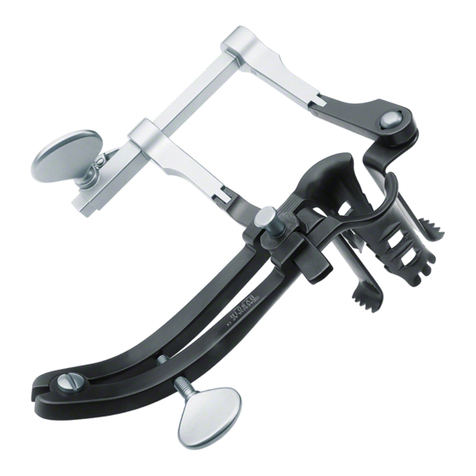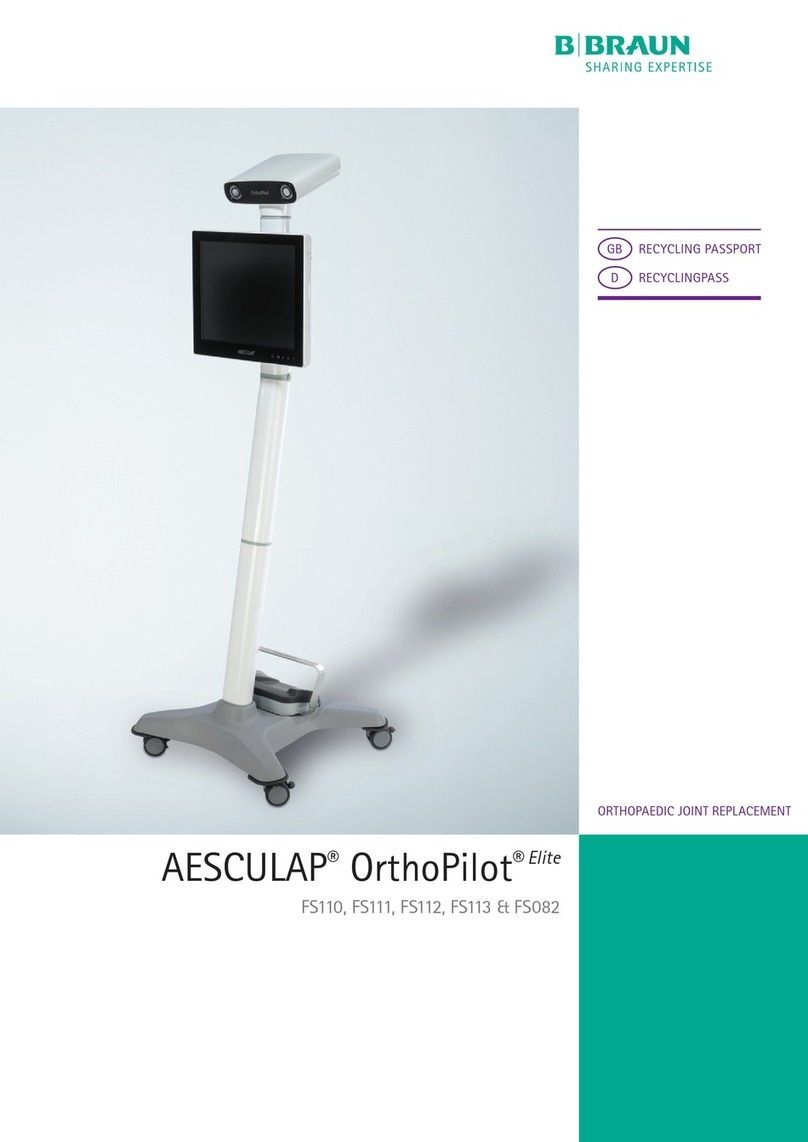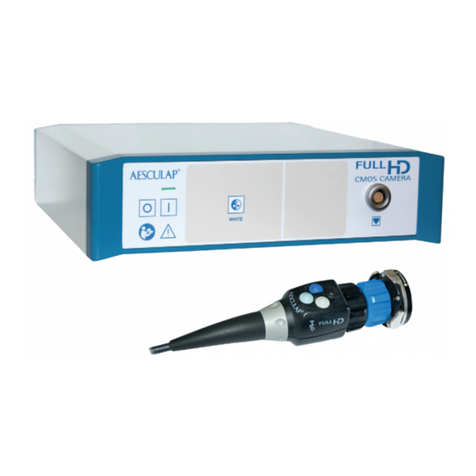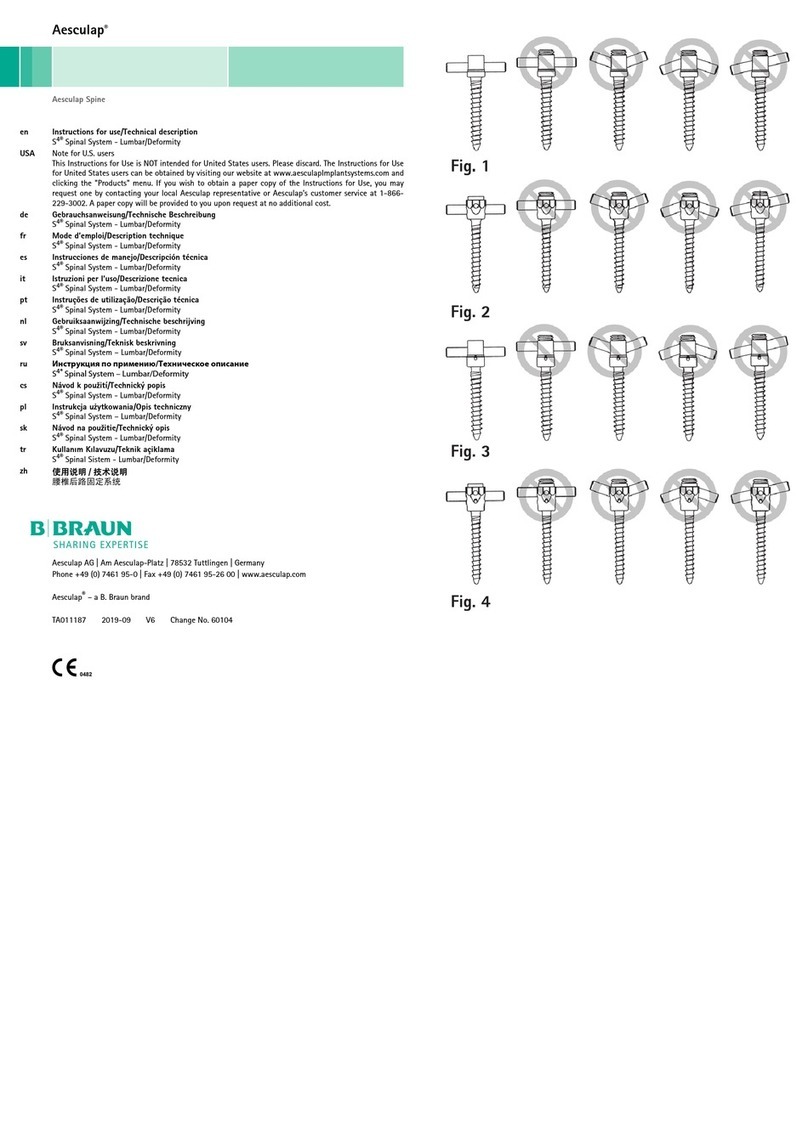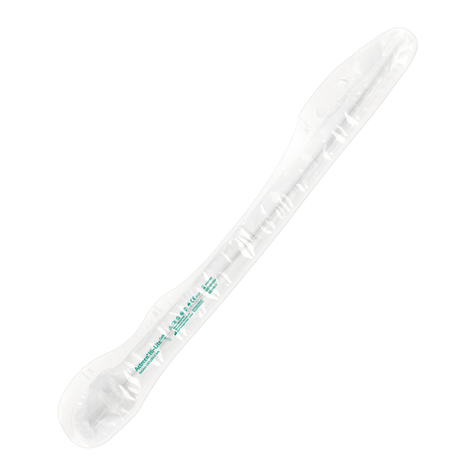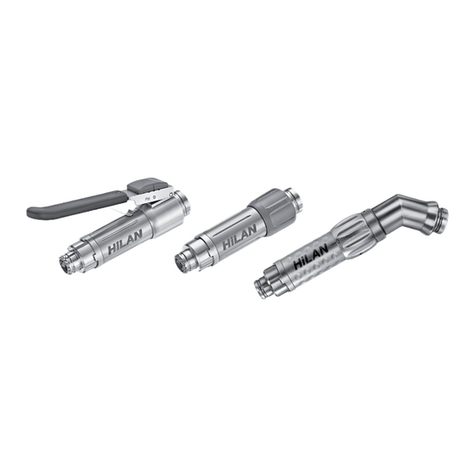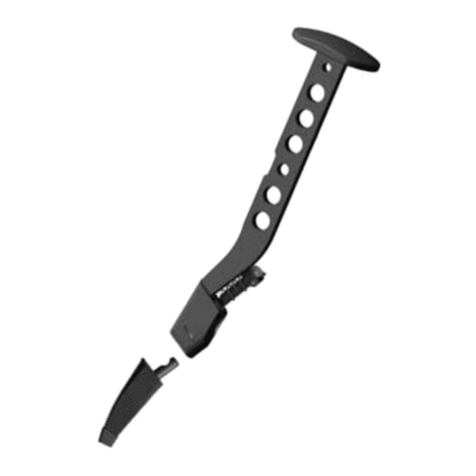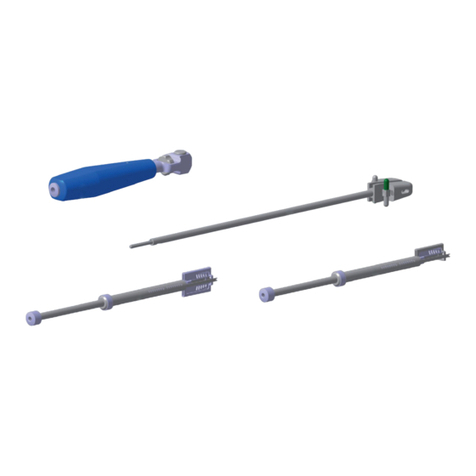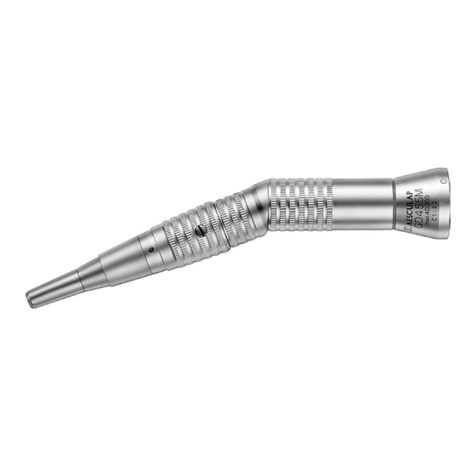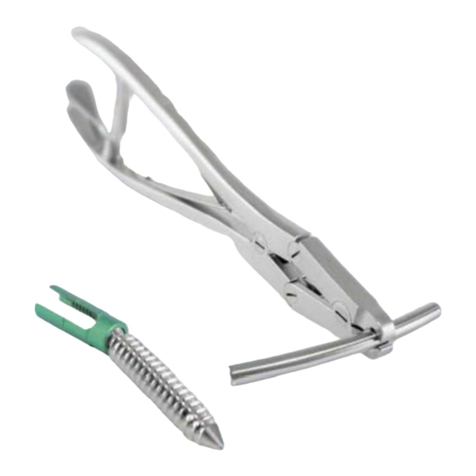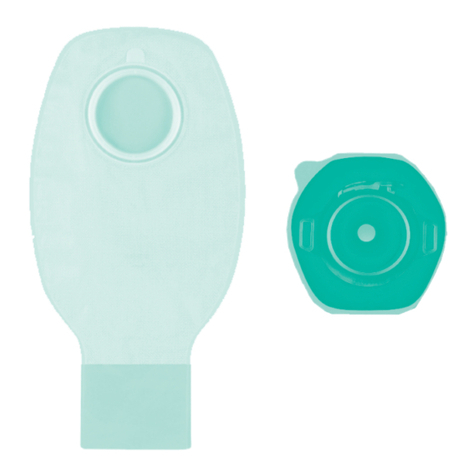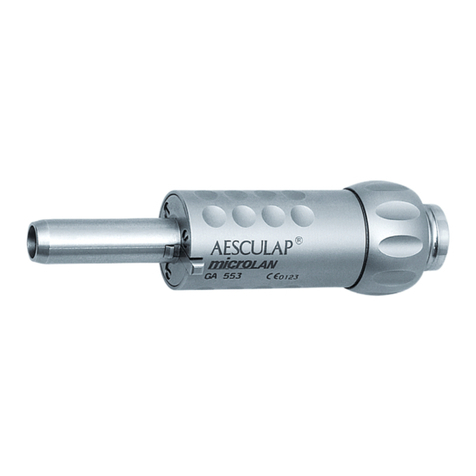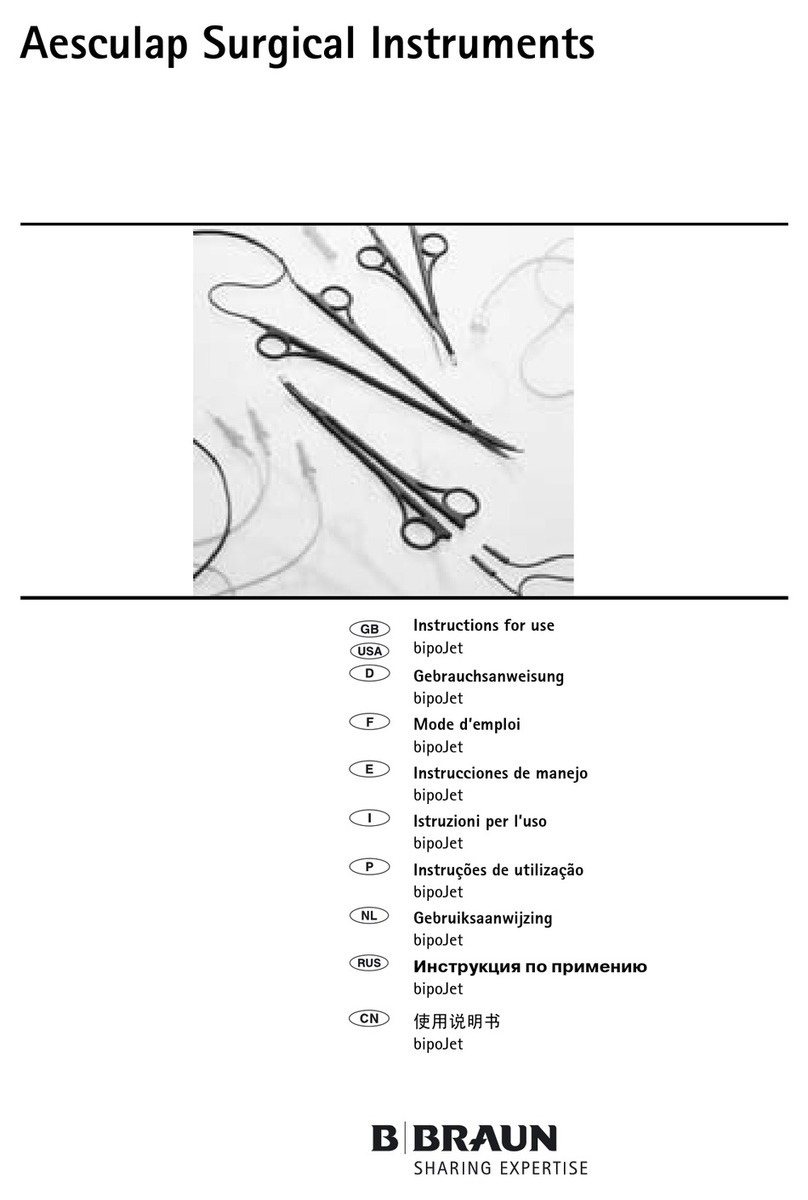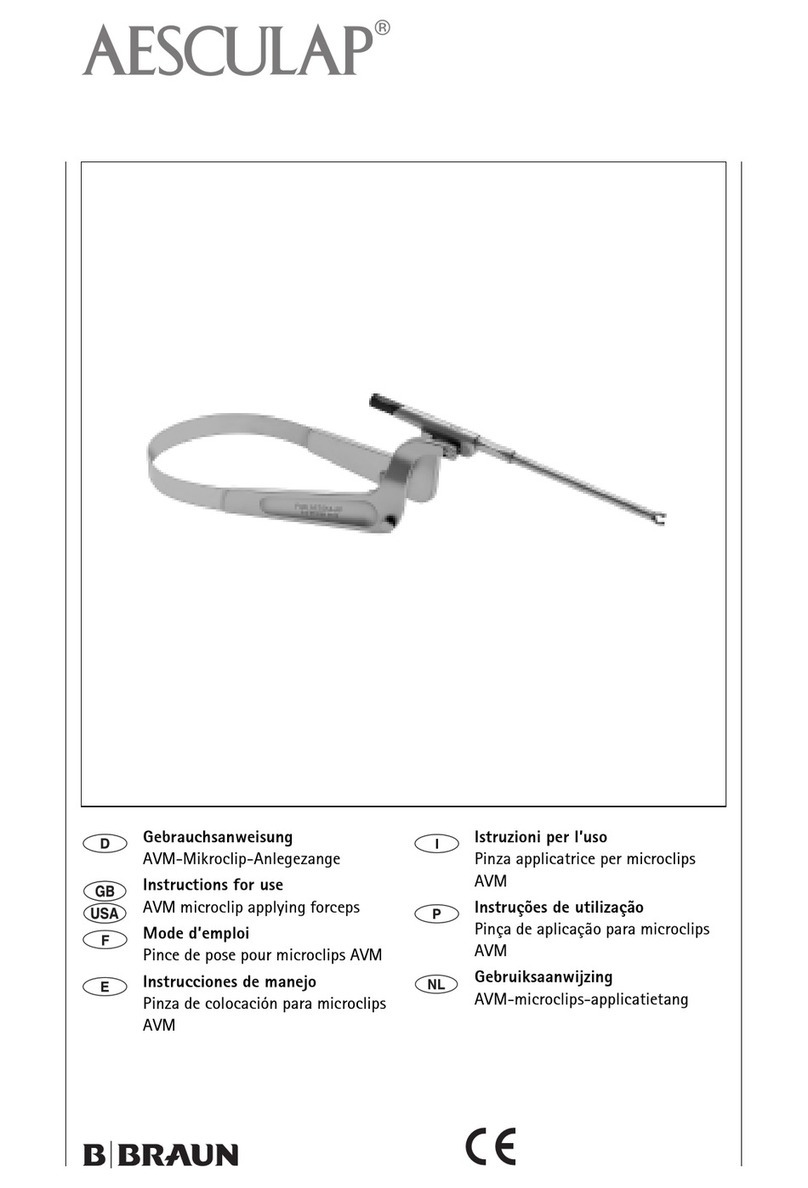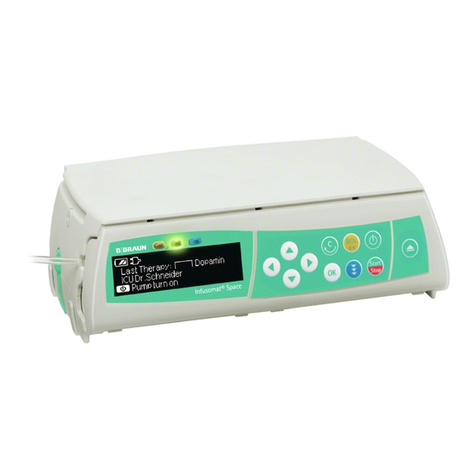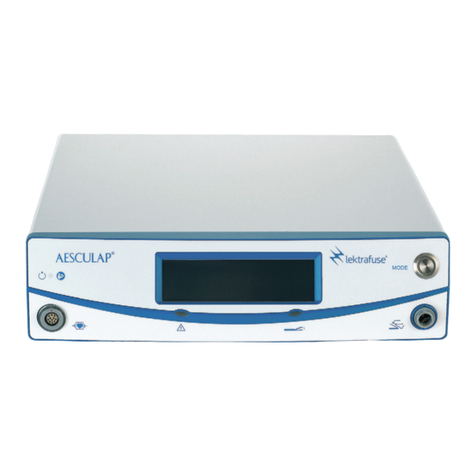
Perform additional drying, if necessary.
Only process chemicals that have been tested and approved (e.g. VAH or FDA approval or CE mark) and which are
compatible with the product’s materials according to the chemical manufacturers’ recommendations may be used
for processing the product. All the chemical manufacturer's application specifications must be strictly observed. Fail-
ure to do so can result in the following problems:
■Optical changes in materials, e.g., fading or discoloration of titanium or aluminum. For aluminum, the applica-
tion/process solution only needs to be of pH >8 to cause visible surface changes.
■Material damage such as corrosion, cracks, fracturing, premature aging, or swelling.
►Do not use metal cleaning brushes or other abrasives that would damage the product surface and could cause
corrosion
►For further detailed information on hygienically safe and material-preserving/value-preserving reprocessing, see
www.a-k-i.org Rubrik Veröffentlichungen Rote Broschüre – Proper maintenance of instruments.
Disassembling the product before carrying out the reprocessing procedure
►Disassemble the product immediately after use, as described in the respective instructions for use.
Preparations at the place of use
►If applicable, rinse surfaces that are not accessible to visible inspection (preferably with demineralized water),
using a disposable syringe, for example.
►Remove any visible surgical residues as much as possible with a damp, lint-free cloth.
►Place the dry product in a sealed waste container and forward it on for cleaning and disinfection within 6 hours.
Preparation before cleaning
►Dismantle the product prior to cleaning, see Disassembling.
Cleaning/disinfection
Product-specific safety notes on the reprocessing procedure
►For prion inactivation, clean/disinfect the endoscope mechanically using a prion-inactivating cleaning agent.
►Do not use oxidizing chemicals (e.g. H2O2), which could cause bleaching/layer loss of the product.
►Use suitable cleaning/disinfecting agents if the product is put away in a wet condition. To prevent foam forma-
tion and reduced effectiveness of the process chemicals: Prior to mechanical cleaning and disinfection, rinse the
product thoroughly with running water.
►Clean and disinfect microsurgical products mechanically if they can be placed securely in the machine or on the
positioning aids.
►Only use bactericidal, fungicidal, and virucidal disinfectants.
►Preferably use thermal disinfecting processes.
►Following the chemical disinfection, thoroughly rinse the product with clear running water. Always adhere to the
manufacturer’s instructions.
Manual cleaning/disinfection
►Prior to manual disinfecting, allow water to drip off for a sufficient length of time to prevent dilution of the dis-
infecting solution.
►After manual cleaning/disinfection, check visible surfaces visually for residues.
►Repeat the cleaning /disinfection process if necessary.
Manual cleaning with immersion disinfection
D–W: Drinking water
FD–W: Fully desalinated water (demineralized, low microbiological contamination:
max. 10 microorganisms/ml, low endotoxin: max. 0.25 endotoxin units/ml)
RT: Room temperature
Phase I
►Completely immerse the instrument in the cleaner/disinfectant solution. Ensure that all accessible surfaces are
moistened.
►Clean the product immersed in the solution, using a soft cloth or, if necessary, a suitable cleaning brush, until all
visible residues have been removed from the surfaces.
►Use a suitable cleaning brush to clean all surfaces that are not visible, e.g. in products with concealed crevices,
lumens, or complex geometries, for at least 1 minute or until no further residues can be removed. Mobilize non-
rigid components, e.g. set screws, joints, slides, etc. 3 times in each direction to the positive stop.
►Thoroughly rinse these components with the cleaning disinfectant solution (at least five times), using a dispos-
able syringe (20 ml).
►Do not use metal cleaning brushes or other abrasives that would damage the product surface and could cause
corrosion
Phase II
►Completely rinse/ rinse through the product (all accessible surfaces) 3 times for at least 1 min. Mobilize non-
rigid components, e.g. set screws, joints, slides, etc. 3 times in each direction to the positive stop. Use fresh water
for every rinse.
►Thoroughly (at least 5 times) rinse through surfaces inaccessible to visual inspection, e.g. in products with hidden
crevices or lumens (e.g. empty/working channel) or complex geometries, using a single-use syringe (20 ml).
►Drain any remaining water fully.
Phase III
►Fully immerse the product in the disinfectant solution. Ensure that all accessible surfaces are moistened.
►During disinfection, mobilize non-rigid components, such as set screws, joints etc., 3 times in each direction to
the positive stop.
►Rinse lumens at least 5 times at the beginning of the exposure time, using a disposable syringe (20 ml). Ensure
that all accessible surfaces are moistened.
Phase IV
►Following disinfection, rinse/ rinse through the product completely (all accessible surfaces) 3 times for at least
2 minutes. Use fresh water for every rinse.
►During the final rinse, mobilize non-rigid components, such as set screws, joints etc., 3 times in each direction
to the positive stop.
►Thoroughly (at least 5 times) rinse through surfaces inaccessible to visual inspection, e.g. in products with hidden
crevices or lumens (e.g. empty/working channel) or complex geometries, using a single-use syringe (20 ml).
►Drain any remaining water fully.
Phase V
►Dry the product with a soft, lint-free cloth.
►Dry inaccessible areas with medical compressed air (Pmax = 5 bar).
Mechanical cleaning/disinfecting
Note
The cleaning and disinfection device must be of tested and approved effectiveness (e.g. FDA approval or CE mark
according to DIN EN ISO 15883).
Note
The cleaning and disinfection device used for processing must be serviced and checked at regular intervals.
Note
Only use cleaning agents that are suitable for this product class (rigid endoscope).
►Place the instrument in a tray that is suitable for cleaning (avoiding rinsing blind spots).
►Products with a sheath diameter of ≤4 mm must be cleaned and sterilized in special Aesculap optics trays only.
►Process the product in a cleaning/disinfecting machine. Follow the instructions of the washing machine’s man-
ufacturer.
►Avoid abrupt cooling of the product (e.g. in water).
Mechanical alkaline cleaning and thermal disinfecting
Machine type: single-chamber cleaning/disinfection device without ultrasound
D–W: Drinking water
FD–W: Fully desalinated water (demineralized, low microbiological contamination: drinking water quality
at least)
*Prion-inactivating detergent (see Technical information Dr. Weigert neodisher® SeptoClean)
►Connect components with lumens and channels directly to the rinsing port of the injector carriage.
►Check visible surfaces for residues after mechanical cleaning/disinfecting.
Inspection, maintenance and checks
►Allow the product to cool down to room temperature.
►After each complete cleaning, disinfecting and drying cycle, check that the instrument is dry, clean, operational,
and free of damage (e.g. broken insulation or corroded, loose, bent, broken, cracked, worn, or fractured compo-
nents).
►Inspect surfaces, cavities, lumens and openings for visible debris.
►Dry the product if it is wet or damp.
►Repeat cleaning and disinfection of products that still show impurities or contamination.
►Check that the product functions correctly.
►For products with locking mechanism (e.g. MINOP): Check the locking mechanism for smooth movement.
►Immediately put aside damaged or inoperative products and send them to Aesculap Technical Service, see Tech-
nical Service.
►Assemble dismountable products, see Assembling.
►Check for compatibility with associated products.
Packaging
►Appropriately protect products with fine working tips.
►Place the product in its holder or on a suitable tray. Ensure that all cutting edges are protected.
►Pack trays appropriately for the intended sterilization process (e.g. in sterile Aesculap containers).
►Ensure that the packaging provides sufficient protection against recontamination of the product during storage.
DANGER
Risk to patient due to cross contamination!
►Do not clean contaminated products together with uncontaminated products
in a tray.
CAUTION
Damage to the product due to inappropriate cleaning/disinfecting agents and/or
excessive temperatures!
►Use cleaning and disinfecting agents according to the manufacturer’s instruc-
tions which
–are approved for rigid endoscopes,
–do not attack softeners (e.g. in silicone).
►Observe specifications regarding concentration, temperature and exposure
time.
►Do not exceed the maximum permitted cleaning temperature of 55 °C.
CAUTION
Damage to the optical system caused by loosening of connections during ultra-
sound cleaning!
►Do not clean the endoscope by ultrasonic treatment under any circumstances.
Phase step T
[°C/°F]
t
[min]
Conc.
[%] Water
quality Chemicals
I Cleaning 35-45
95-113
5 0,8 D–W Cidezyme/Enzol
II Intermediate
rinse RT (cold) 3 x 1 - D–W -
III Disinfection 20-25
68-77
12 0,55 D–W Cidex OPA (process solution,
0.55 % ortho-phthalaldehyde)
IV Final rinse RT (cold) 3 x 2 - FD–W
(sterile)
-
V Drying RT - - - -
Phase step T
[°C/°F]
t
[min]
Water
quality Chemicals
I Pre-rinse <25/77 3 D–W -
II Cleaning 55/131 10 FD-W Dr. Weigert neodisher® SeptoClean 1 %*
working solution
III Intermediate rinse >10/50 1 FD-W -
IV Thermal disinfection 90/194 5 FD–W -
V Drying - - - In accordance with the program for the
cleaning and disinfecting machine
CAUTION
Damage (metal seizure/friction corrosion) to the product caused by insufficient
lubrication!
►Prior to function checks, lubricate moving parts (e.g. joints, pusher compo-
nents and threaded rods) at the marked lubrication points, using maintenance
oil suitable for the respective sterilization process (e.g. for steam sterilization:
Aesculap STERILIT® I oil spray JG600 or STERILIT® I drip lubricator JG598).





